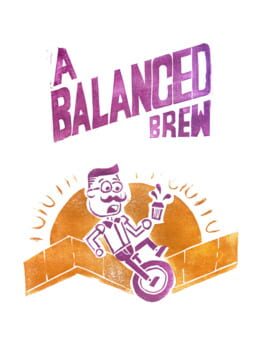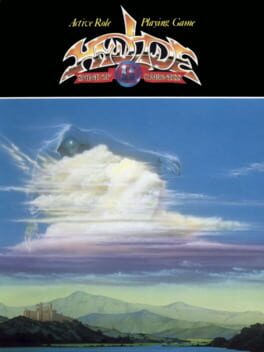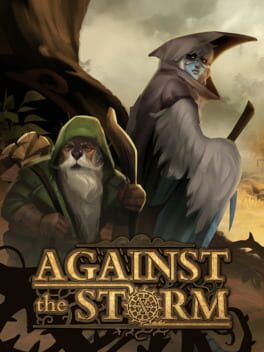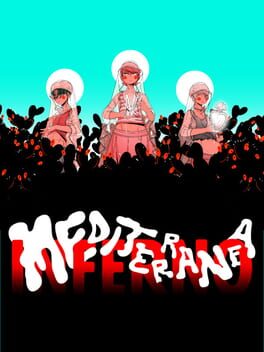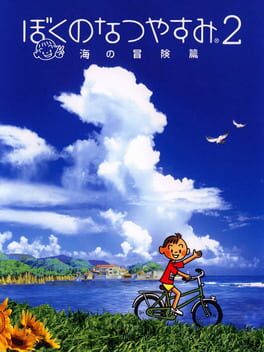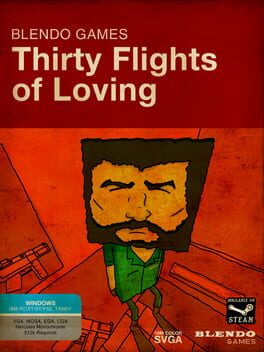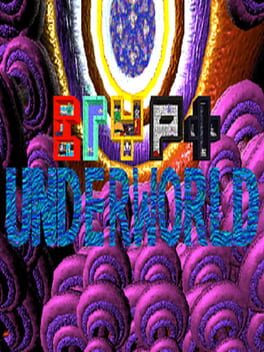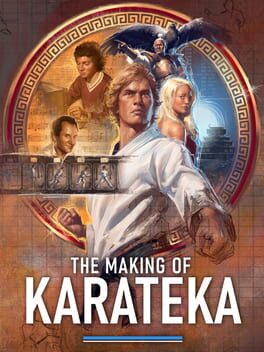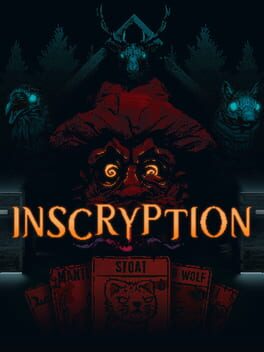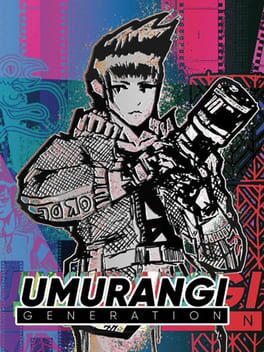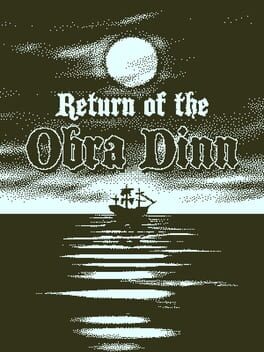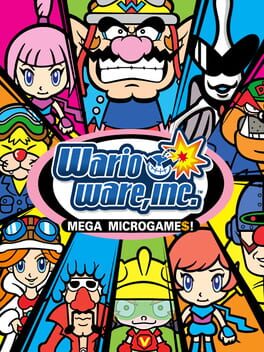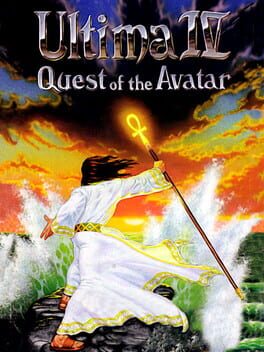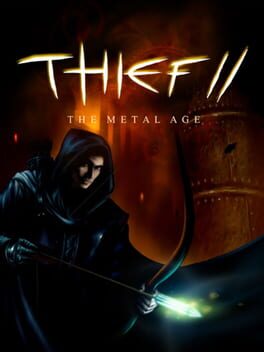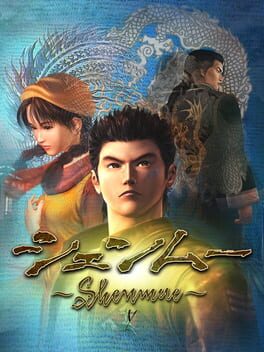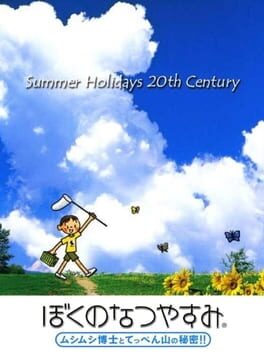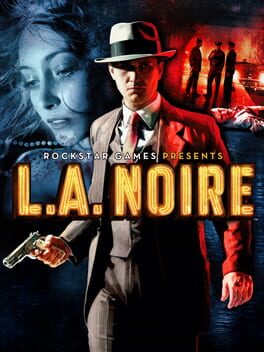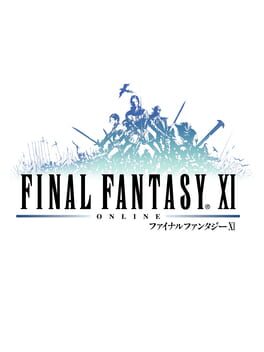56 reviews liked by winnow
A Balanced Brew
2023
For some reason Hydlide 2 has two entries so I'm copy pasting this entry from a year ago. Because you can find God in Hydlide 2.
---
Well, I finished it... this feels even more ridiculous than Hydlide 1 did to me. Thanks to the GameFAQs guide!
First off, it's much much longer - maybe 3-4x as long as Hydlide 1? The game achieves this by dividing the game roughly into 3 acts - training in the overworld, exploring the dungeons, then diving into the final dungeon. It's an interesting structure - you basically will die in even the easiest dungeons without some MP and a few levels and equipment, which feels different than the usual RPG flow today, weaving between dungeon and overworld.
Enemies barely drop money at first, so the most feasible way to get this game to a playable state without hours of time grinding is to just use an infinite sell glitch. (Get a black crystal, then sell your whole inventory - you'll be able to sell the last item you sold over and over). Although, on reflection, it is possible to grind 'legit', but it will just take a while and it's easy to do it in a lot of wrong ways that will add hours of time.
The dungeon solutions were a lot more obscure than Hydlide 2. All switches and staircases are hidden, as well as various traps. You do get a heal spell, though, which makes going a bit easier, but you'll still be saving every screen because a bad enemy spawn could mean your death as most of the dungeons are narrow and twisty.
The overworld 'solutions' are just as bizarre: break a tombstone to allow a village to spawn, break a random rock to open a dungeon, attack a tree to find a key.
However, by the time the final dungeon rolled around it felt a bit like Hydlide 1 in the sense that I was able to actually grind in a reasonable manner, albeit slowly. Still, certain enemy behaviors and patterns (final dungeon enemies might shoot you through walls, track you very fast, block your way, put you to sleep, etc) actually felt like they were evolving with each level. I was pretty impressed in this respect. If this wasn't purely a tile-based game and had better motion actually it could be fun, maybe.
As for the dungeons.. well, most of them have the same blue brick tileset and music. The puzzles are almost all impossible to figure out without a guide, but following a guide was strangely satisfying. The movement is just unreliable enough that even following a walkthrough wasn't totally easy. Sometimes you're too low level and have to carefully maneuver around the enemies. There's all sorts of strange D&D traps that JRPGs would continue to use - poison trap rooms, trap doors, trap warps, trapped chests, hidden walls... Weird, unexpected design to the dungeons - such as one where a random spawning enemy drops the key - while impossible to clear on one's own, are memorable. Or, the mirrored dungeon where two devil twins spawn fast-moving fire elementals. Having an "action rpg" in this simple 2D perspective means that setpieces get expressed in this remarkably minimal but evocative way. (Even if it's hard to control...)
Lastly I did love (the idea) of the final dungeon. After speaking a password to a tree (lol) you can step into a puddle to be swept to a massive, underground ocean of sorts, with Kraken and Harpy-like monsters flying around. From there you dive into a massive labyrinth, its shape kind of reminiscent of a ruined castle or ruined town. There seem to be "alternate universe" versions of each floor, and you need to navigate through these to find crystals that will summon the help of a fairy, who can open a staircase to the deepest layer. It's a bit of an eerie feel, as monsters get stronger on each layer, and the rooms can feel weirdly sparse. The second-deepest layer has dragons arranged weirdly, like a triptych drawing of 'action rpg tropes'. A river of lava, some sandy ritual site, next to twisty mazes.
You progress through the game so slowly (and with such tedium) that it becomes memorable.
-
There's more of a texture to Hydlide 2's world in terms of characters. You can talk to some 'enemies' - the humanoid ones - although they'll just say some stock phrase, and you'll probably accidentally attack them while trying to get close. There's a mostly pointless morality meter, which stops you from talking to shopkeepers if it's below 30%. Nothing much is done with this, but it is funny as some nonintuitive enemies lower it (Sand Worms, Thieves). It lowers a lot faster than it goes up, and it was a real pain point for me in my first hours of the game where I thought I had to grind on zombies in the overworld until I could raise my strength and buy armor. (And I did do this, sadly...)
All over the overworld, humanoid characters run around randomly. You can kill all of them, but you shouldn't, because of the morality system... It's strange how lively and chaotic Hydlide 2's world feels compared to the first. Sure, there's no story within the game, but the game is so short that I'm happy to just imagine one and it honestly doesn't need one, too.
-
Lastly, equipment and magic. I didn't really use the spells, mostly because my emulator made it hard to press the function keys. And spells usually did like zero damage or it was hard to safely cast or aim them given how fast enemies move.
Equipment is bizarre - maxing your attack doesn't let you one-shot enemies. They'll still take a few hits at 0 HP before dying. Although you can get max gear by level 6-8 with the money glitch. Your inventory has a max capacity of 10 items, too, which is strange.. this game is strange..
-
I was kind of stuck between rating a 3 or 4. But I'm going to say 4 just because I found the game inspiring even if it's sort of bad (worse than the first, too). This game has just as much absurd stuff as Hydlide 1, but maybe its length and tedium and grinding make it more memorable? Hard to say. I guess it's got me interested in Hydlide 3, and Rune Worth (the unofficial continuation), so we'll see. The way the Hydlide series embodies so much of the 'spirit' of D&D Fantasy Action RPGs is really interesting to me, even if they're unplayable without guides and kind of awful to control lol...
For me the game froze right before I triggered the final cutscene (lol). Which feels fitting to end this game.
---
Well, I finished it... this feels even more ridiculous than Hydlide 1 did to me. Thanks to the GameFAQs guide!
First off, it's much much longer - maybe 3-4x as long as Hydlide 1? The game achieves this by dividing the game roughly into 3 acts - training in the overworld, exploring the dungeons, then diving into the final dungeon. It's an interesting structure - you basically will die in even the easiest dungeons without some MP and a few levels and equipment, which feels different than the usual RPG flow today, weaving between dungeon and overworld.
Enemies barely drop money at first, so the most feasible way to get this game to a playable state without hours of time grinding is to just use an infinite sell glitch. (Get a black crystal, then sell your whole inventory - you'll be able to sell the last item you sold over and over). Although, on reflection, it is possible to grind 'legit', but it will just take a while and it's easy to do it in a lot of wrong ways that will add hours of time.
The dungeon solutions were a lot more obscure than Hydlide 2. All switches and staircases are hidden, as well as various traps. You do get a heal spell, though, which makes going a bit easier, but you'll still be saving every screen because a bad enemy spawn could mean your death as most of the dungeons are narrow and twisty.
The overworld 'solutions' are just as bizarre: break a tombstone to allow a village to spawn, break a random rock to open a dungeon, attack a tree to find a key.
However, by the time the final dungeon rolled around it felt a bit like Hydlide 1 in the sense that I was able to actually grind in a reasonable manner, albeit slowly. Still, certain enemy behaviors and patterns (final dungeon enemies might shoot you through walls, track you very fast, block your way, put you to sleep, etc) actually felt like they were evolving with each level. I was pretty impressed in this respect. If this wasn't purely a tile-based game and had better motion actually it could be fun, maybe.
As for the dungeons.. well, most of them have the same blue brick tileset and music. The puzzles are almost all impossible to figure out without a guide, but following a guide was strangely satisfying. The movement is just unreliable enough that even following a walkthrough wasn't totally easy. Sometimes you're too low level and have to carefully maneuver around the enemies. There's all sorts of strange D&D traps that JRPGs would continue to use - poison trap rooms, trap doors, trap warps, trapped chests, hidden walls... Weird, unexpected design to the dungeons - such as one where a random spawning enemy drops the key - while impossible to clear on one's own, are memorable. Or, the mirrored dungeon where two devil twins spawn fast-moving fire elementals. Having an "action rpg" in this simple 2D perspective means that setpieces get expressed in this remarkably minimal but evocative way. (Even if it's hard to control...)
Lastly I did love (the idea) of the final dungeon. After speaking a password to a tree (lol) you can step into a puddle to be swept to a massive, underground ocean of sorts, with Kraken and Harpy-like monsters flying around. From there you dive into a massive labyrinth, its shape kind of reminiscent of a ruined castle or ruined town. There seem to be "alternate universe" versions of each floor, and you need to navigate through these to find crystals that will summon the help of a fairy, who can open a staircase to the deepest layer. It's a bit of an eerie feel, as monsters get stronger on each layer, and the rooms can feel weirdly sparse. The second-deepest layer has dragons arranged weirdly, like a triptych drawing of 'action rpg tropes'. A river of lava, some sandy ritual site, next to twisty mazes.
You progress through the game so slowly (and with such tedium) that it becomes memorable.
-
There's more of a texture to Hydlide 2's world in terms of characters. You can talk to some 'enemies' - the humanoid ones - although they'll just say some stock phrase, and you'll probably accidentally attack them while trying to get close. There's a mostly pointless morality meter, which stops you from talking to shopkeepers if it's below 30%. Nothing much is done with this, but it is funny as some nonintuitive enemies lower it (Sand Worms, Thieves). It lowers a lot faster than it goes up, and it was a real pain point for me in my first hours of the game where I thought I had to grind on zombies in the overworld until I could raise my strength and buy armor. (And I did do this, sadly...)
All over the overworld, humanoid characters run around randomly. You can kill all of them, but you shouldn't, because of the morality system... It's strange how lively and chaotic Hydlide 2's world feels compared to the first. Sure, there's no story within the game, but the game is so short that I'm happy to just imagine one and it honestly doesn't need one, too.
-
Lastly, equipment and magic. I didn't really use the spells, mostly because my emulator made it hard to press the function keys. And spells usually did like zero damage or it was hard to safely cast or aim them given how fast enemies move.
Equipment is bizarre - maxing your attack doesn't let you one-shot enemies. They'll still take a few hits at 0 HP before dying. Although you can get max gear by level 6-8 with the money glitch. Your inventory has a max capacity of 10 items, too, which is strange.. this game is strange..
-
I was kind of stuck between rating a 3 or 4. But I'm going to say 4 just because I found the game inspiring even if it's sort of bad (worse than the first, too). This game has just as much absurd stuff as Hydlide 1, but maybe its length and tedium and grinding make it more memorable? Hard to say. I guess it's got me interested in Hydlide 3, and Rune Worth (the unofficial continuation), so we'll see. The way the Hydlide series embodies so much of the 'spirit' of D&D Fantasy Action RPGs is really interesting to me, even if they're unplayable without guides and kind of awful to control lol...
For me the game froze right before I triggered the final cutscene (lol). Which feels fitting to end this game.
Against the Storm
2022
When someone first pitched Against the Storm to me, I'll admit that I was a skeptic. It's two core genres, city-builder and roguelite, do not, at first, seem an obvious pairing. I'm happy to report, however, that my instincts were wrong: Against the Storm is a delight.
It is important context for this review that I do not consider myself a core simulation/citybuilder player. I've played lots of them, enough to have developed a decent handle of their basic skills, but it is simply not the kind of game I gravitate towards, generally - the deluge of information and tacit pressure to achieve some sort of maximum efficiency is the kind of thing that generally overwhelms, rather than enthralls.
It is no surprise, then, that I initially bounced off of Against the Storm.
It is an agent-based simulation, meaning everything has a generally "softer" feel, player actions take a while to have impact, and on occasion you are the mercy of the worker AI. The basics of the citybuilding feel relatively traditional with a litany of disparate resources to manage, workers to keep pleased, and supply chains to carefully arrange; however, the roguelite elements have steeped into every corner of gameplay. Perks are randomly selected at the start of each in-game year, blueprints are awarded from a random list once you've scored enough points - hell, even the worker types you get are delivered in a pretty standard roguelite "room cleared" option menu. It's clear pretty early on that this is not a citybuilder that is simply dabbling in another genre; the commitment here to its roguelite inspiration is just as strong.
Immediately, it was fascinating. But it wasn't fun - not yet, not for me at least. See, I was playing Against the Storm like it was Age of Empires, or Cities Skylines. I tried to plan every idea several minutes ahead, focused on building only what I could reliably make use of, never moved my workers around, and tried to complete every single goal the game gave me. The result was immense frustrating; long-term goals were regularly interrupted by simply not rolling the right blueprints, workers wasted tons of time making resources that never went anywhere, goals dead-ended when I just didn't happen to get lucky finding that last "Ancient Tablet." I was rigid in my thinking, efficiency focused - after all, that's what citybuilders had taught me to prize. Against the Storm is not your average citybuilder.
It was only when I stopped listening to my hard-won simulation game instincts that Against the Storm began to sing. And boy, is it a song worth listening to.
When you look for it, flexibility is written into every gene of this game. Buildings that depend on their placement (like foraging tents, for example) are moveable at no cost, most structure refund 100% of their construction materials when destroyed, and workers can be unassigned and reassigned to buildings with a single mouseclick. In a genre of games built around forward planning, Against the Storm urges you to react. The situation at your little outpost changes rapidly and violently from one season to the next - new goals can completely subvert what your initial setup was, and perks will often stubbornly misalign with your current strengths. If you sit still, you'll flounder. If you follow the game and use all the tools at your disposal to reconfigure your strategy, and you will be justly rewarded. The games narrative supports this; you are not an architect, building a city to last the ages. You are a viceroy, throwing up outposts in a tough, hostile world that will last just long enough to get you to that next seal. In this game, it is adapt or die.
The result is a citybuilding experience like nothing I have ever played before. It is not contemplative, slow, or restful - it stressful, and tense. The forest gets angrier with every year that passes, the easy victories comes less and less, and every time a new set of goals comes up in the late-game I groan at how hard-earned some of these victory points are going to be. At times, the game feels downright urgent; some forest events threaten massive consequences if not dealt with on a specific timeline, often calling for you to come up with a specfic set of resources you might never have even seen before in this particular location. The wilderness is playing with a stacked deck, and the thrill of Against the Storm is finding moments of management genius to snatch back success from a bad draw.
In true roguelite fashion, Against the Storm is not about building the perfect, 100% efficient, streamlined build, but in doing the best you can with the scraps you're given. You will have inefficiencies - pointless buildings left behind, perks that do nothing for you, workers sat about twiddling their thumbs - but ultimately, all that matters is that you get enough victory points to survive another day, to move deeper into the woods. However you get that done is up to you.
During that first bit where I was still learning to play the game, my pride-and-joy run had been one wherein everything had just fallen into place to make a perfect wine town. Every blueprint just what I needed, every goal serendipitously relevant to winemaking. At the time, it felt like the game working as intended - the systems getting out of my way so I can enjoy so I can enjoy some classic industrial fun. Now, I realize this was probably one of my least interesting runs across my time with Against the Storm. There was no cleverness to it, no madcap resolving of disasters, no thinking on the fly. Just rote, lining up of numbers to maximize another number. This wasn't the game working as intended - it was fairly dull blip. I much prefer the chaos.
That isn't to say that, even while performing at peak, Against the Storm is without issues. The metaprogression is not exactly stellarly done, for one thing - the leveling system feels near to vestigial, and the research/upgrade tree is a up-and-down stacked mess of UI that is hard to manage. The starts and ends of new settlements, after very many hours dedicated to the game, did tend to start following a bit of a formula once some strategies emerged as most successful, which took away from a lot of the frenetic fun of the midgame. But that's it, those are really my main gripes. Frankly, they were not enough to touch my enjoyment of the game meaningfully, at least not until I was already very deep in the weeds, and in some sense at this point these particular limitations are beginning to feel like a part of the roguelite genre at large.
I'm not done playing Against the Storm. Much the contrary, I'm barely past the first seal. Yet, it has already consumed hours of my life, hours that I happily gave in trade for a truly unique, exciting game experience. I have no doubt I will continue to play it for quite some time to come, and I urge that you do too! Indie studios trying out a weird, new, and experimental gameplay style is often reason enough to check out a game, even when that experiment doesn't necessarily pan out. In this case, though, the result is one of my favorite games of an already very stacked year! If you've ever enjoyed citybuilders, even a little bit, you should play this game.
It is important context for this review that I do not consider myself a core simulation/citybuilder player. I've played lots of them, enough to have developed a decent handle of their basic skills, but it is simply not the kind of game I gravitate towards, generally - the deluge of information and tacit pressure to achieve some sort of maximum efficiency is the kind of thing that generally overwhelms, rather than enthralls.
It is no surprise, then, that I initially bounced off of Against the Storm.
It is an agent-based simulation, meaning everything has a generally "softer" feel, player actions take a while to have impact, and on occasion you are the mercy of the worker AI. The basics of the citybuilding feel relatively traditional with a litany of disparate resources to manage, workers to keep pleased, and supply chains to carefully arrange; however, the roguelite elements have steeped into every corner of gameplay. Perks are randomly selected at the start of each in-game year, blueprints are awarded from a random list once you've scored enough points - hell, even the worker types you get are delivered in a pretty standard roguelite "room cleared" option menu. It's clear pretty early on that this is not a citybuilder that is simply dabbling in another genre; the commitment here to its roguelite inspiration is just as strong.
Immediately, it was fascinating. But it wasn't fun - not yet, not for me at least. See, I was playing Against the Storm like it was Age of Empires, or Cities Skylines. I tried to plan every idea several minutes ahead, focused on building only what I could reliably make use of, never moved my workers around, and tried to complete every single goal the game gave me. The result was immense frustrating; long-term goals were regularly interrupted by simply not rolling the right blueprints, workers wasted tons of time making resources that never went anywhere, goals dead-ended when I just didn't happen to get lucky finding that last "Ancient Tablet." I was rigid in my thinking, efficiency focused - after all, that's what citybuilders had taught me to prize. Against the Storm is not your average citybuilder.
It was only when I stopped listening to my hard-won simulation game instincts that Against the Storm began to sing. And boy, is it a song worth listening to.
When you look for it, flexibility is written into every gene of this game. Buildings that depend on their placement (like foraging tents, for example) are moveable at no cost, most structure refund 100% of their construction materials when destroyed, and workers can be unassigned and reassigned to buildings with a single mouseclick. In a genre of games built around forward planning, Against the Storm urges you to react. The situation at your little outpost changes rapidly and violently from one season to the next - new goals can completely subvert what your initial setup was, and perks will often stubbornly misalign with your current strengths. If you sit still, you'll flounder. If you follow the game and use all the tools at your disposal to reconfigure your strategy, and you will be justly rewarded. The games narrative supports this; you are not an architect, building a city to last the ages. You are a viceroy, throwing up outposts in a tough, hostile world that will last just long enough to get you to that next seal. In this game, it is adapt or die.
The result is a citybuilding experience like nothing I have ever played before. It is not contemplative, slow, or restful - it stressful, and tense. The forest gets angrier with every year that passes, the easy victories comes less and less, and every time a new set of goals comes up in the late-game I groan at how hard-earned some of these victory points are going to be. At times, the game feels downright urgent; some forest events threaten massive consequences if not dealt with on a specific timeline, often calling for you to come up with a specfic set of resources you might never have even seen before in this particular location. The wilderness is playing with a stacked deck, and the thrill of Against the Storm is finding moments of management genius to snatch back success from a bad draw.
In true roguelite fashion, Against the Storm is not about building the perfect, 100% efficient, streamlined build, but in doing the best you can with the scraps you're given. You will have inefficiencies - pointless buildings left behind, perks that do nothing for you, workers sat about twiddling their thumbs - but ultimately, all that matters is that you get enough victory points to survive another day, to move deeper into the woods. However you get that done is up to you.
During that first bit where I was still learning to play the game, my pride-and-joy run had been one wherein everything had just fallen into place to make a perfect wine town. Every blueprint just what I needed, every goal serendipitously relevant to winemaking. At the time, it felt like the game working as intended - the systems getting out of my way so I can enjoy so I can enjoy some classic industrial fun. Now, I realize this was probably one of my least interesting runs across my time with Against the Storm. There was no cleverness to it, no madcap resolving of disasters, no thinking on the fly. Just rote, lining up of numbers to maximize another number. This wasn't the game working as intended - it was fairly dull blip. I much prefer the chaos.
That isn't to say that, even while performing at peak, Against the Storm is without issues. The metaprogression is not exactly stellarly done, for one thing - the leveling system feels near to vestigial, and the research/upgrade tree is a up-and-down stacked mess of UI that is hard to manage. The starts and ends of new settlements, after very many hours dedicated to the game, did tend to start following a bit of a formula once some strategies emerged as most successful, which took away from a lot of the frenetic fun of the midgame. But that's it, those are really my main gripes. Frankly, they were not enough to touch my enjoyment of the game meaningfully, at least not until I was already very deep in the weeds, and in some sense at this point these particular limitations are beginning to feel like a part of the roguelite genre at large.
I'm not done playing Against the Storm. Much the contrary, I'm barely past the first seal. Yet, it has already consumed hours of my life, hours that I happily gave in trade for a truly unique, exciting game experience. I have no doubt I will continue to play it for quite some time to come, and I urge that you do too! Indie studios trying out a weird, new, and experimental gameplay style is often reason enough to check out a game, even when that experiment doesn't necessarily pan out. In this case, though, the result is one of my favorite games of an already very stacked year! If you've ever enjoyed citybuilders, even a little bit, you should play this game.
Don't get me wrong, I love a good Kirby game as much as the next person. This game was amazing; fantastic level design made Kirby feel right at home in 3D space, and amazing graphics only added to the charm. But, I find that with each subsequent release of this franchise I am less and less inclined to sit through and finish it. What I mean is, it takes me quite a while to finish these games. Perhaps its due to their difficulty (simple and easy) or the extreme repetitiveness of the gameplay loop but it took me a while to finish this one.
Still loved it though, debating if I want to finish the post game or not still. The boss of the main story is top notch, but it left me wanting more gross goo amalgamates rather than furry bait.
Still loved it though, debating if I want to finish the post game or not still. The boss of the main story is top notch, but it left me wanting more gross goo amalgamates rather than furry bait.
Mediterranea Inferno
2023
Though I never spent a summer there, I was viscerally reminded of the town my mother grew up in while playing Boku No Natsuyasumi 2. Like Tonomi, it was an oceanside town with an elderly population, forested hills with trails and wildlife, bridges, beaches, an old man who was involved in World War 2, and a nearby highway that put the ferry out of business. Most eerily, my mother's parents had styled their house for their nine children as a sort of bed and breakfast with themed rooms for the "guests", with it built into a hill such that the ground floor towards the back opened up to elevated balconies facing the water. I imagine it's easy for anyone to get buried in their own memories playing a Boku No Natsuyasumi game, though for me it felt auspicious that the game that was translated to English first was the one most resembling a place from my own life.
When I was five years old, my mother's father passed away. I have a handful of fuzzy memories of him that all feel pale compared to the day of his funeral. My family and I stood outside a church on a hill, the sun hotter and brighter than I had ever known it to get at that age. All my older cousins were there, between four and twenty years older than me; my mother was the youngest of nine, and I was her youngest child. My relationship with that side of the family has always been somewhat distant by extension, shaped by childhood experiences of looking up at tall goofy people who mentioned they last saw me when I was only this big and had inside jokes I was on the outside of. Granddad looked waxy and unnatural in the coffin.
For the rest of my adolescence, my mother and her siblings would spend weekends with her mother in that town. My siblings and I were brought along, often requiring my brother and I to take claritin all weekend to counteract the old family cat's shedding. We'd play around the house and the backyard, pick up rocks and shells along the beach, drop sticks in the estuary and see which one passed under the bridge first. My oldest sister got lost in the woods once. Grandma's sight and hearing weakened gradually, and often only left the house for church. She'd join any card games though.
In "The Promise: The Making of Darkness on the Edge of Town" we see archival footage of the Holmdel, New Jersey house where Bruce Springsteen and the E Street Band rehearsed in the mid 70s, as well as the Haddonfield home of Frank Stefanko where the album cover photoshoot was taken. I always subconsciously associated the floral wallpaper of the album cover with my mother's hometown and the surrounding area, and the documentary revealed they were similarly quiet and isolated houses. It can be simultaneously invigorating and unsettling to see a place in art that you so strongly connect to a place from your life, only to find the reality that inspired the art was truly similar and not imagined. Boku 2 struck a similar nerve.
Yet a place and its wallpaper only matters so much. Boku 2 is not a story about the grief experienced by a child, rather a child's perception of grief in others. It is not about disconnect from relatives but becoming closer to them. It is not about a place you visit for a weekend and see in different seasons, it is about a full month of experiences strung together artfully through a specific month of a specific year in history. Yasuko is about as old as my mother was in 1975, though I didn't know my mother then. In turn, Tonomi is what you make of it: the moments you find and the moments you miss, alike in their passing you by. Already passed and already past.
I played through the game one in-game day per one in-reality day. Looking back from the end of my November 2023/August 1975, I'm glad I did. Encouraged to play honestly and see how I got by on my own instincts, I found myself roleplaying a child who wakes up excited to do something and forgetting what they had wanted to do tomorrow yesterday. I got a lot of the collectibles but not all of any category. A few plot threads lay untied at the end (like what was up with the cat shack), while others seemingly could have gone a bit differently, and more felt fully explored but left deliberately ambiguous in their details. Though it was not particularly sentimental nor tragic, the ending eked out a few tears.
Like the song goes, "It's easy to get buried in the past / When you try to make a good thing last." And like the youtube comment goes, we need more games like this.
When I was five years old, my mother's father passed away. I have a handful of fuzzy memories of him that all feel pale compared to the day of his funeral. My family and I stood outside a church on a hill, the sun hotter and brighter than I had ever known it to get at that age. All my older cousins were there, between four and twenty years older than me; my mother was the youngest of nine, and I was her youngest child. My relationship with that side of the family has always been somewhat distant by extension, shaped by childhood experiences of looking up at tall goofy people who mentioned they last saw me when I was only this big and had inside jokes I was on the outside of. Granddad looked waxy and unnatural in the coffin.
For the rest of my adolescence, my mother and her siblings would spend weekends with her mother in that town. My siblings and I were brought along, often requiring my brother and I to take claritin all weekend to counteract the old family cat's shedding. We'd play around the house and the backyard, pick up rocks and shells along the beach, drop sticks in the estuary and see which one passed under the bridge first. My oldest sister got lost in the woods once. Grandma's sight and hearing weakened gradually, and often only left the house for church. She'd join any card games though.
In "The Promise: The Making of Darkness on the Edge of Town" we see archival footage of the Holmdel, New Jersey house where Bruce Springsteen and the E Street Band rehearsed in the mid 70s, as well as the Haddonfield home of Frank Stefanko where the album cover photoshoot was taken. I always subconsciously associated the floral wallpaper of the album cover with my mother's hometown and the surrounding area, and the documentary revealed they were similarly quiet and isolated houses. It can be simultaneously invigorating and unsettling to see a place in art that you so strongly connect to a place from your life, only to find the reality that inspired the art was truly similar and not imagined. Boku 2 struck a similar nerve.
Yet a place and its wallpaper only matters so much. Boku 2 is not a story about the grief experienced by a child, rather a child's perception of grief in others. It is not about disconnect from relatives but becoming closer to them. It is not about a place you visit for a weekend and see in different seasons, it is about a full month of experiences strung together artfully through a specific month of a specific year in history. Yasuko is about as old as my mother was in 1975, though I didn't know my mother then. In turn, Tonomi is what you make of it: the moments you find and the moments you miss, alike in their passing you by. Already passed and already past.
I played through the game one in-game day per one in-reality day. Looking back from the end of my November 2023/August 1975, I'm glad I did. Encouraged to play honestly and see how I got by on my own instincts, I found myself roleplaying a child who wakes up excited to do something and forgetting what they had wanted to do tomorrow yesterday. I got a lot of the collectibles but not all of any category. A few plot threads lay untied at the end (like what was up with the cat shack), while others seemingly could have gone a bit differently, and more felt fully explored but left deliberately ambiguous in their details. Though it was not particularly sentimental nor tragic, the ending eked out a few tears.
Like the song goes, "It's easy to get buried in the past / When you try to make a good thing last." And like the youtube comment goes, we need more games like this.
24 Killers
2023
somehow i don't have this reviewed! the developer todd and I go way back to the early 2010s. i thought their early games like Chain Champ were cool.
following this game's evolution over that period has been fun, and I'm glad it turned out so well - a charming and personal adventure game with unique art, music, sense of place.
following this game's evolution over that period has been fun, and I'm glad it turned out so well - a charming and personal adventure game with unique art, music, sense of place.
Crypt Underworld
2023
Such a great first-person 3D exploration game. The simple immersive sim mechanics give just enough depth to make it easy to set your own goals and decisions as to what you'll navigate throughout the game's world. The art decisions and layout have this great sense of imagination to them. You can find furniture and a bunch of funny / interesting little moments. "Perfect Animal Crossing..."
Digital Eclipse's 'interactive documentary' formula is really something else and although I had a good time learning all the stuff about the development of Karateka and Deathbounce I'm not massively fussed about actually playing either game. When one of these is released about a game I'm super into, it'll be something else.
Also, how the fuck is Mechner 59 years old? Digital Eclipse should do a Gold Series documentary on his skincare routine.
Also, how the fuck is Mechner 59 years old? Digital Eclipse should do a Gold Series documentary on his skincare routine.
